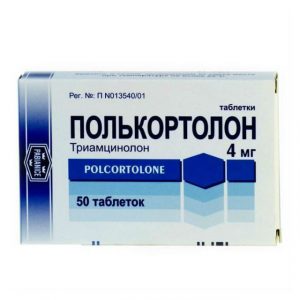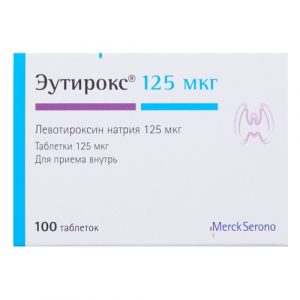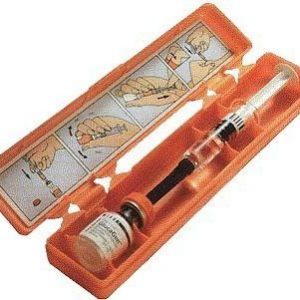Description
Latin name
Oxytocinum
Injection
Injection solution
packaging 10 pcs
The pharmacological action of
oxytocin is uterotonizing.
Enhances the permeability of the membranes of the myometrium cells for ions, increases its excitability and causes and enhances the contraction of the smooth muscles of the uterus.
Pharmacodynamics
Stimulates lactation, contributing to the reduction of myoepithelial cells of the mammary alveoli.
Indications
Stimulation of labor during postponement of pregnancy
stimulation and stimulation of labor in premature discharge of amniotic fluid, in primary or secondary labor weakness
cesarean section (during surgery)
management of labor in childbirth, or in childbirth , abortion (including termination of pregnancy of a long time)
lactostasis in the early postpartum period, painful premenstrual syndrome, accompanied by edema, increase of body weight.
Contraindications
Hypersensitivity, clinically narrow pelvis, improper position of the fetus, complete placenta previa, risk of uterine rupture.
Use during pregnancy and lactation
In the first trimester of pregnancy, oxytocin is used only for spontaneous or induced abortions.
Numerous data on the use of oxytocin, its chemical structure and pharmacological properties indicate that, following the instructions for use, oxytocin does not affect the formation of fetal malformations.
passes into breast milk in small amounts.
When using the drug to stop uterine bleeding, breastfeeding can be started only at the end of the course of treatment with oxytocin.
Composition of
1 ml of solution contains:
Active ingredient:
oxytocin
Excipients:
acetic acid glacial
chlorobutanol hemihydrate
ethanol (96%)
water for injection.
Dosage and administration
Intramuscularly, intravenously (single injection, drip), intranasally into the wall or vaginal part of the cervix.
During labor, intramuscularly – 1 IU with an interval of 30-60 minutes (depending on the reaction of the uterus) is more appropriate – intravenous drip (10-30 drops per minute) – 1-3 IU in 300-500 ml of 5% glucose solution (under the control of the frequency of uterine contractions and fetal heartbeats) before the end of childbirth and after separation of the placenta. To stimulate labor, intramuscularly – 0.5 1 IU with an interval of 30 60 minutes, can be administered intravenously (as for labor excitation), depending on the obstetric situation (opening of the uterine pharynx, etc.).
At birth in the pelvic presentation – 2-5 IU.
For hypotension and atony of the uterus – 5-10 IU, intravenously, in 10-20 ml of a 40% glucose solution. To stimulate lactation, intramuscularly or intranasally (using a pipette) – 0.5 IU 5 minutes before feeding, if necessary, repeat the injection.
In premenstrual syndrome – intranasally, from the 20th day of the cycle to 1 day of menstruation.
Side effects
Nausea, vomiting, arrhythmia, including in the fetus, bradycardia (of the mother and the fetus)
hypertension and subarachnoid bleeding or hypotension and shock
water retention (before poisoning) – with prolonged iv injection of
allergic reactions.
Drug Interaction
When administered oxytocin 3-4 hours after the use of vasoconstrictors with caudal anesthesia, severe arterial hypertension is possible.
With cyclopropane, halothane anesthesia, cardiovascular action of oxytocin may be altered with unexpected development of arterial hypotension, sinus bradycardia, and atrioventricular rhythm in the woman during anesthesia.
Overdose
Symptoms: depend mainly on the degree of hyperactivity of the uterus, regardless of the presence of hypersensitivity to the drug.
Hyperstimulation with hypertonic and tetanic contractions or with a base tone of 15-20 mm aq. Art. between the two contractions leads to disorderly labor, rupture of the body or cervix, vagina, bleeding in the postpartum period, uterine-placental insufficiency, bradycardia of the fetus, its hypoxia, hypercapnia, compression, birth trauma, or death.
Hyperhydration with convulsions as a result of the antidiuretic effect of oxytocin is a serious complication and develops with long-term administration of large doses (40-50 ml / min).
Treatment of hyperhydration: cancellation of oxytocin, restriction of fluid use, use of diuretics for boosting diuresis, intravenous administration of hypertonic saline solution, correction of electrolyte imbalance, relief of convulsions with appropriate doses of barbiturates and provision of professional care.
Storage conditions
At a temperature not exceeding 25 ° C. (do not freeze).
Shelf suitability
4 Year
Deystvuyuschee substances
Oxytocin
Pharmacy
Prescription
Dosage Form A dosage form
solution
for injection and infusion



